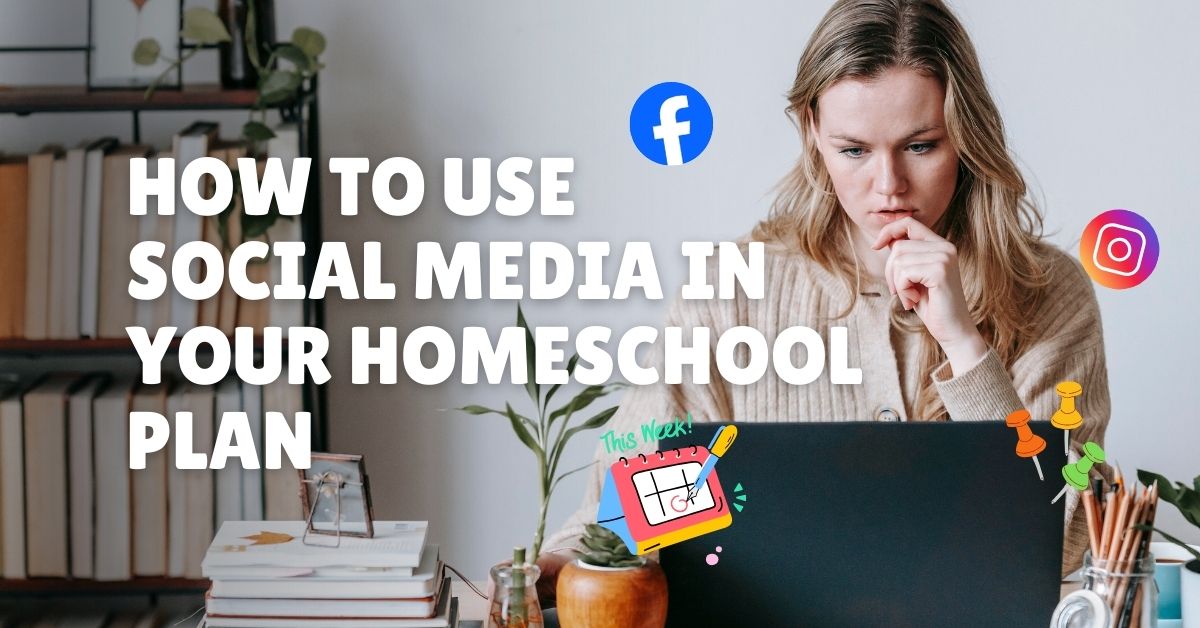Homeschooling offers families the freedom to create tailor-made educational experiences. Pairing this flexibility with innovative tools can elevate the learning process. One tool gaining popularity among homeschoolers is social media. Once seen strictly as a distraction, it’s now recognized as a treasure trove of educational resources and opportunities. When used thoughtfully, social media can enhance learning, foster community, and prepare children for a tech-savvy world.
Here’s how to use social media for homeschooling effectively while maintaining a balance that supports your child’s overall development.
Why Use Social Media in Homeschooling?
Social media can enrich your homeschool plan in several ways, from providing access to free educational content to connecting with a broad community of learners. Here’s how it can benefit your family:
- Access to Free Learning Resources
Platforms like YouTube, Instagram, and TikTok are filled with tutorials, lesson ideas, and projects. Educators, influencers, and organizations share a wealth of knowledge on topics like science experiments, history lessons, book recommendations, and more.
Example: For hands-on science experiments, search for video demonstrations by educators or science enthusiasts and try them together at home. - Build Community and Get Support
Social media connects you with the larger homeschooling community. Groups on Facebook or hashtags on Instagram like #homeschoollife provide spaces to share advice, resources, and encouragement. If you’re new to homeschooling, these communities can help you feel supported while offering practical tips. - Teach Digital Literacy
Including social media in your teaching gives kids early exposure to responsible digital habits. With guided use, it’s possible to teach critical life skills like media literacy, digital etiquette, and online safety. These skills are increasingly vital in today’s tech-driven world.
By incorporating social media thoughtfully, you can enrich your homeschool plan and foster both academic and life skills.
Choosing the Best Platforms for Homeschooling
Each social media platform brings something unique to the table. Selecting the right one will depend on your child’s learning style and your teaching goals. Here’s a breakdown of popular platforms to consider:
- YouTube
Best for visual and auditory learners. You’ll find high-quality content on any topic imaginable—from math hacks to geography documentaries. Some popular channels include National Geographic Kids, TED-Ed, and CrashCourse. - Pinterest
Perfect for curriculum planning and discovering creative projects. Save ideas for crafts, printable worksheets, or lesson plans organized by subject or theme. It’s a go-to for arts, DIY experiments, and hands-on activities. - Facebook
Excellent for finding support. Homeschooling groups allow parents to share resources, participate in discussions, and coordinate local events. Look for groups tailored to your teaching style, curriculum preferences, or your child’s age and interests. - Instagram
Offers visual inspiration and bite-sized lessons. Many educators share engaging posts with book recommendations, quick science facts, or educational challenges. Use hashtags like #homeschoolresources or #learningathome to explore new ideas. - TikTok
Great for short, fun lessons. If used wisely, TikTok can be a surprising source of learning. Many creators post quick videos on history, science, art, and language tips. You can curate your child’s feed by selecting verified educational accounts and enabling parental controls.
By understanding what each platform offers, you can curate a mix of resources that align with your homeschooling goals.

Creative Ways to Utilize Social Media in Homeschooling
Once you’ve chosen platforms that suit your needs, it’s time to get creative. Here are actionable ways to integrate social media into your child’s learning experience:
- Supplement Textbook Lessons with Videos
Use YouTube to add depth to lessons. If your child is studying ancient history, watch documentaries or reenactments. For STEM topics, find science experiments to replicate at home or watch demonstrations of complex concepts. - Participate in Educational Challenges
Keep learning fun by joining social media challenges. These could be reading challenges on Instagram, building STEM projects shared on TikTok, or creative writing prompts launched by online communities. Challenges add an element of play to lessons and can motivate kids to stay engaged. - Collaborate with Other Homeschoolers
Use Facebook groups or Instagram direct messaging to organize group activities, whether they’re virtual or in-person. For example:- Host a virtual book club discussion.
- Plan a group science fair.
- Work on a collaborative art project.
- Group efforts strengthen teamwork and communication skills while fostering connections.
- Take Virtual Field Trips
Follow museums, zoos, or cultural institutions on platforms like Instagram and Facebook. Many host live tours or share video walkthroughs. This gives children access to places they might not otherwise visit, such as international museums or historic landmarks. - Learn Practical Digital Skills
Teach older students how social media works as a professional tool. Assign a project where they create a presentation or manage a mock “business page.” Skills like writing captions, analyzing metrics, or designing graphics can teach entrepreneurship and modern marketing. - Discover New Educational Apps
Many apps integrated with social media offer interactive learning tools. For example:- Kahoot! for quizzes and trivia.
- Duolingo for sharpening language skills.
- Trello for organizing assignments and project timelines.
Explore educational apps that align with your goals and discover how other parents use them through shared posts.
These strategies will help you bring variety to lessons and keep learning dynamic.
Using Social Media Safely and Responsibly
While social media has its advantages, using it responsibly is essential when incorporating it into homeschooling. Here’s how to ensure a safe and productive experience for your child:
- Set Boundaries
Limit screen time and balance digital learning with offline activities like outdoor play, reading, or family projects. Establish clear rules about tech use and take breaks to prevent burnout. - Curate Content
Use parental controls and account settings to filter age-appropriate content. Regularly review educational accounts to ensure your child is exposed to high-quality and relevant material. - Teach Digital Hygiene
Guide your child on safe online interactions. Discuss the importance of fact-checking information, recognizing ads or scams, and respecting others’ opinions online. - Monitor Participation
Stay involved when your child uses social media in their learning. Whether they’re watching tutorials or participating in challenges, your presence reinforces safety and focus.
Setting these guidelines not only ensures safety but also instills healthy social media habits for the future.
Unlocking the Potential of Social Media in Homeschooling
Social media opens doors to limitless educational opportunities. By actively incorporating it into your homeschool plan, you can access diverse content, build meaningful connections with other families, and teach essential tech skills. When approached strategically and responsibly, social media becomes more than just a digital space; it becomes a learning hub that complements traditional teaching methods.
Explore the possibilities, try new ideas, and don’t hesitate to adjust your approach as needed. Homeschooling with social media is a creative process that can truly enrich your child’s educational experience.



